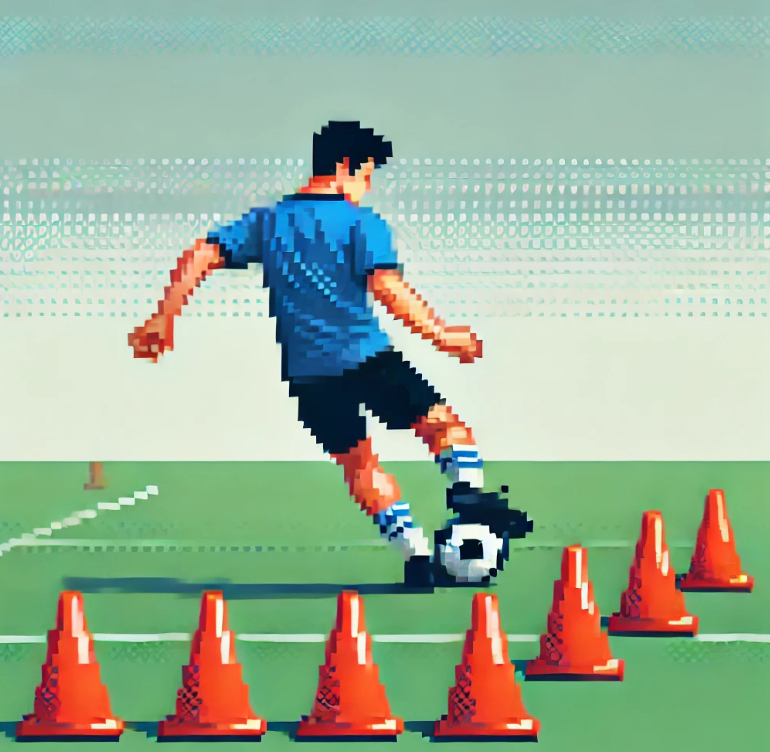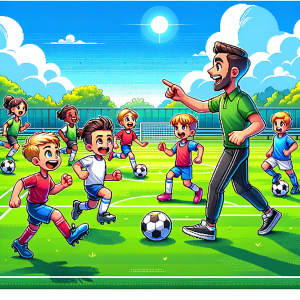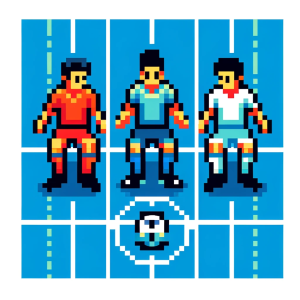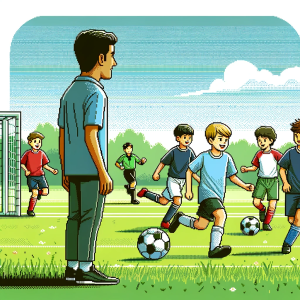
Ecological-Dynamic Training: The Future of Soccer Development
Soccer coaches and players know that mastering the beautiful game takes more than just running drills. Yet, many youth soccer training programs still rely on repetitive, predictable exercises. Is this the best way to prepare players for the fast-paced, unpredictable nature of actual matches? A recent study published in the Journal of Functional Morphology and Kinesiology challenges traditional approaches to youth soccer development by pitting two distinct methods against each other: the traditional prescriptive approach and the ecological-dynamic approach. The results? They might just change the way we think about soccer training forever.
The Science Behind Soccer Skills
Picture this: two soccer teams, both comprised of 12-year-old players, undergo an eight-week training program with one critical difference. One group follows a traditional method, focusing on exact repetitions, while the other group trains using the ecological-dynamic approach. This method emphasizes adaptability, decision-making, and real-game scenarios. After weeks of practice, both groups are evaluated on their passing skills. Which group comes out on top? You might think the traditional group, with its rigorous focus on technique, would fare better. Surprisingly, it’s the group trained with ecological-dynamic principles that shows more significant improvement.
A New Way to Train Soccer Players
What sets the ecological-dynamic approach apart? It all comes down to the environment in which players learn. Traditional training methods often involve pre-determined exercises that aim to perfect a specific skill, like passing, dribbling, or shooting. Coaches give explicit instructions, and players repeat the motions until they “get it right.” While this method may produce results in practice, it doesn’t always prepare players for the unpredictable situations they’ll face on the field.
In contrast, the ecological-dynamic approach focuses on how athletes interact with their environment. Instead of prescribing one “correct” way to perform a skill, this method adapts to the game’s dynamics. For instance, players might practice passing in a constrained area with limited visibility, forcing them to rely on quick decisions and problem-solving. The goal is not to perfect a single movement but to develop flexible skills that can be applied to a variety of game situations.
Why This Matters for Coaches and Players
You might be wondering: why should coaches abandon the traditional approach in favor of this new method? The answer lies in the nature of soccer itself. Soccer is a game of constant change. Players must make split-second decisions based on the positions of teammates, opponents, and the ball. While traditional training methods can improve technique, they don’t always teach players how to adapt to the fluid nature of the game.
In the study, the ecological-dynamic group showed greater improvements in their passing skills compared to the traditional group. Not only did they complete passes more quickly, but they also committed fewer errors. This improvement was especially evident when players were put in game-like situations, where decision-making and adaptability are crucial. Simply put, the players who trained under the ecological-dynamic approach were better prepared for the realities of the game.
Breaking Down the Key Findings
So, what did the research reveal about the two training methods? The study compared players’ performances before and after the eight-week training program. The researchers measured how quickly players could complete a series of passes and how accurately they could do so under pressure.
The ecological-dynamic group not only completed their passes faster but also committed fewer penalties during the test. The improvements in this group were notable, with significant reductions in both trial time and penalty time. On the other hand, while the traditional group also improved, their progress wasn’t as dramatic. And even more telling, when both groups were retested five weeks after the program, the ecological-dynamic group retained more of their gains, suggesting that this approach builds more sustainable skills.
These findings are a game-changer—literally. Coaches often focus on getting immediate results, but this research shows that the ecological-dynamic method might not only improve short-term performance but also help players retain their skills over time.
Real-World Applications: Coaching, Player Development, and Club Management
Now that we’ve explored the research, let’s talk about how you can apply these findings to your own soccer coaching or player development strategy.
1. Focus on Adaptability, Not Perfection
Soccer is rarely perfect. Passes don’t always land exactly where you want, and players often need to think on their feet. By incorporating variability into training sessions, coaches can help players develop the problem-solving skills they’ll need in real games. For instance, instead of drilling passes in a predictable setting, introduce constraints that mimic game-like situations—such as reducing the size of the playing area or limiting the number of touches a player can take.
2. Embrace Constraints to Encourage Creative Thinking
The study used tools like occlusion goggles to restrict players’ vision, forcing them to rely on other senses to make decisions. Coaches can use similar techniques to push players outside their comfort zones. By limiting their options (for example, only allowing two touches before passing or using cones to constrain the playing areas), you force them to be more creative and resourceful in their gameplay.
3. Use Game Scenarios in Training
Instead of isolating skills, integrate them into full-game contexts. For instance, instead of running passing drills in a vacuum, run exercises that mimic game scenarios. This not only makes the training more engaging but also teaches players how to use their skills in the context of a match. Practicing in a “real” setting means that players are more likely to retain and apply their skills when it counts.
4. Rethink Your Coaching Role
In the ecological-dynamic approach, the coach’s role shifts from giving instructions to creating environments that facilitate learning. Rather than dictating every move, let players explore different solutions. Use non-verbal feedback, like visual cues, to guide players without over-coaching. This fosters autonomy and encourages players to develop their own understanding of the game.
5. Long-Term Skill Development Over Quick Wins
While the traditional method may yield quick improvements, the ecological-dynamic approach builds skills that last. For club managers, this means investing in training programs that focus on long-term player development. When players are better equipped to handle a variety of situations, they’re more likely to succeed on the field—and bring value to the team in the long run.
Applications
Incorporating these findings into coaching, player development, and club management strategies can lead to more effective and well-rounded players. Here’s how you can apply this research:
- For Coaches: Focus on adaptability and problem-solving in training. Encourage players to make quick decisions in dynamic settings, rather than emphasizing perfection in isolated drills.
- For Player Development: Use variability in training to build flexible skills. Prepare players for the unpredictable nature of real games by simulating game-like scenarios during practice.
- For Club Management: Invest in training programs that prioritize long-term player development. Equip players with the tools to adapt and thrive in diverse game situations, fostering sustained success on the field.
Final Thoughts
Soccer is a dynamic game, and the way we train players should reflect that. The ecological-dynamic approach provides a fresh perspective on skill development, one that prioritizes adaptability, creativity, and real-game application. By embracing this approach, coaches, players, and clubs can cultivate well-rounded athletes who are not just skilled technicians but also smart, adaptive thinkers on the field.



